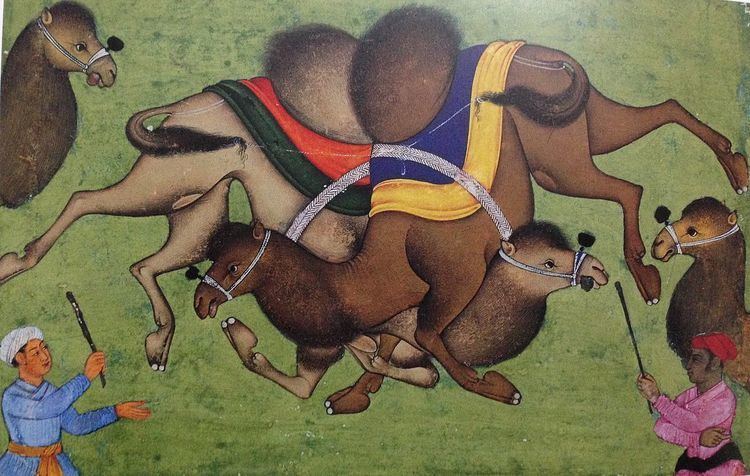 | ||
Camel wrestling (Turkish deve güreşi) is a sport in which two male Tülü camels wrestle, typically in response to a female camel in heat being led before them. It is most common in the Aegean region of Turkey, but is also practiced in other parts of the Middle East and South Asia.
Contents
History
Camel fighting originated among ancient Turkic tribes over 2,400 years ago. Camels also wrestle in the wild, so the practice occurred before it was first organized by nomads. During the 1850s an American military officer was inspired by the popularity of Camel Wrestling in Turkey and set out to establish a Camel Wrestling tournament in Texas. He was unsuccessful, however, due in part to the start of the American Civil War in 1861. In the 1920s the Turkish National Aviation league has held Camel fights as fundraisers in order to purchase planes for the Government of Turkey. The government of Turkey began discouraging the practice in the 1920s, however, characterizing it as too backwards of a practice. In the 1980s the new government of Turkey began encouraging the competitions as part of Turkey's historic culture. Camel wrestling was also a popular event at the Lahore Horse and Cattle show, but it was excluded from the program during the visit of Queen Elizabeth II in 1961 as it was deemed "too fierce" for the Queen.
Event details
Due to the motivating factor of a nearby female camel, the events have historically been held during mating season. The practice of using a nearby female for motivation is not used as frequently now due to the degree of violence it causes. It is difficult to convince male camels to fight without one nearby, so organizers have attempted to entangle two camels together or starve the camels to make them more aggressive. The camels fight by using their necks as leverage to force their opponent to fall down. A camel is declared the winner if his competitor falls to the ground or flees from the fight. Most fighting camels are bred in Iran or Afghanistan.
Male camels begin fighting at age ten and some continue for over a decade. Camel owners often name their camels after politicians and world leaders. The camels are often draped in decorative rugs, carved saddles, and bells. The events are also accompanied by beauty contests between camels. Camel pageants are also popular in Saudi Arabia, where they often accompany camel races. Musicians often accompany the events playing flutes and drums. Camel meat is sometimes served to spectators, as well. As of 2011, there are an estimated 2,000 wrestling (or Tulu) camels in Turkey, bred specially for the competitions. A successful camel can be sold for over $20,000.
The events can occasionally be hazardous to spectators if the camels attempt to flee through the crowd. Other hazards include camel spittle. On some occasions fights also break out between the owners of camels.
There are roughly thirty annual festivals in Aegean Turkey each year from November to March. Roughly one hundred fighting camels take part in these events, with each camel competing in approximately ten matches. Events always occur on Sundays in football stadiums and typically last ten minutes each. At the end of the season there is often a tournament of champions in which the best camels compete. Many international tourists attend the events, making them a key part of the tourist industry in Western Anatolia. Many tourists are drawn to the events because they are seen as an authentic part of Turkish culture. In addition to the tourism value, camel wrestling is one of the most popular forms of entertainment among rural villagers in western Turkey.
Several animal rights organizations have criticized the practice, characterizing it as cruelty to animals.
